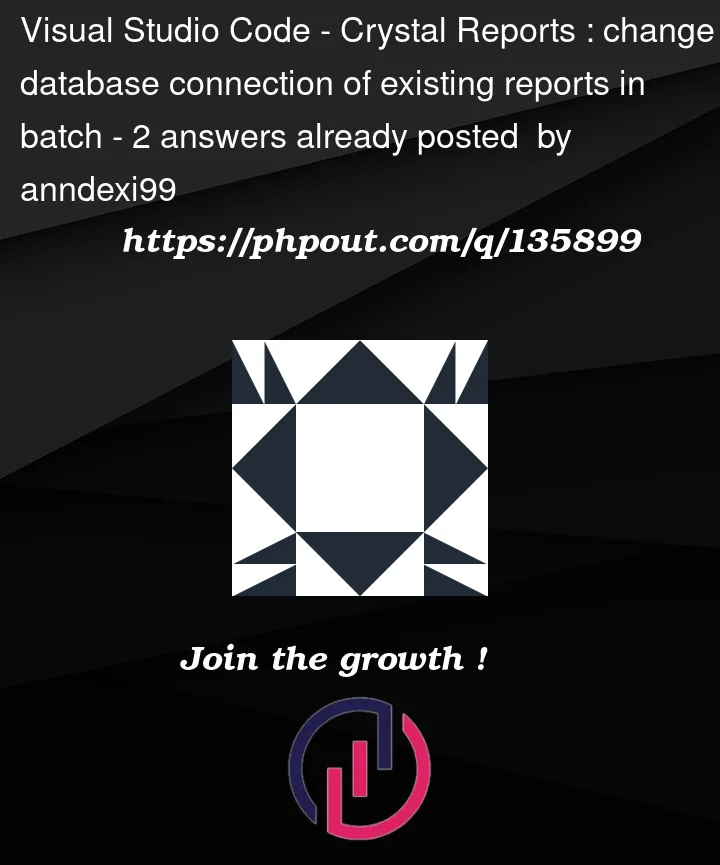I have hundreds of legacy .rpt and am trying to change the connection configuration of all of these reports.
I used Crystal Reports Developer Version for Visual Studio (2019 community edition) to create a new Windows form application project and copy all the .rpt files to the project.
In the solution explorer of VS, I see the cs code in each rpt. It looks like the code only controls the layout of report. The .rpt files don’t seem to have any database connection information.
-
Is copying existing rpt files directly into Windows Form Application project a correct way to import existing rpt? How to import .rpt in VS correctly?
-
Is changing database connection of existing reports in batch possible in Crystal Reports with Visual Studio 2019 community edition?
-
How to change database connection of existing rpt in Crystal Reports with Visual Studio? Can it be done in code with configuration file storing database connection information?
-
I have no idea what language were the reports developed in. It could be VB or C#. Are existing .rpt files language agnostic so that I can manipulate them in any programming language?
-
Documentation for Crystal Reports Developer Version for Visual Studio seems to be very limited on the internet. Is this the official user guide? The content doesn’t seem to help with my problem.
Thanks!




2
Answers
The design of Crystal Reports rpt files is saved in a proprietary format. It is not a programming language.
You can programmatically run these reports and/or modify their design using code via the object model (e.g. Crystal for Visual Studio).
What you are trying to do is possible but rather complex. Given that you have no experience with this, consider using one of the 3rd-party Crystal Reports tools that provide mass-update functionality.
Yes, Ken Hamady maintains a list of such tools here.
While that list contains 10 utilities, most of them are limited to documenting report properties. So focus your attention on those that can update data sources.
Disclosure: I’m the developer of the Visual CUT utility. Here is a video demo of mass-updating data sources across multiple reports using that utility: